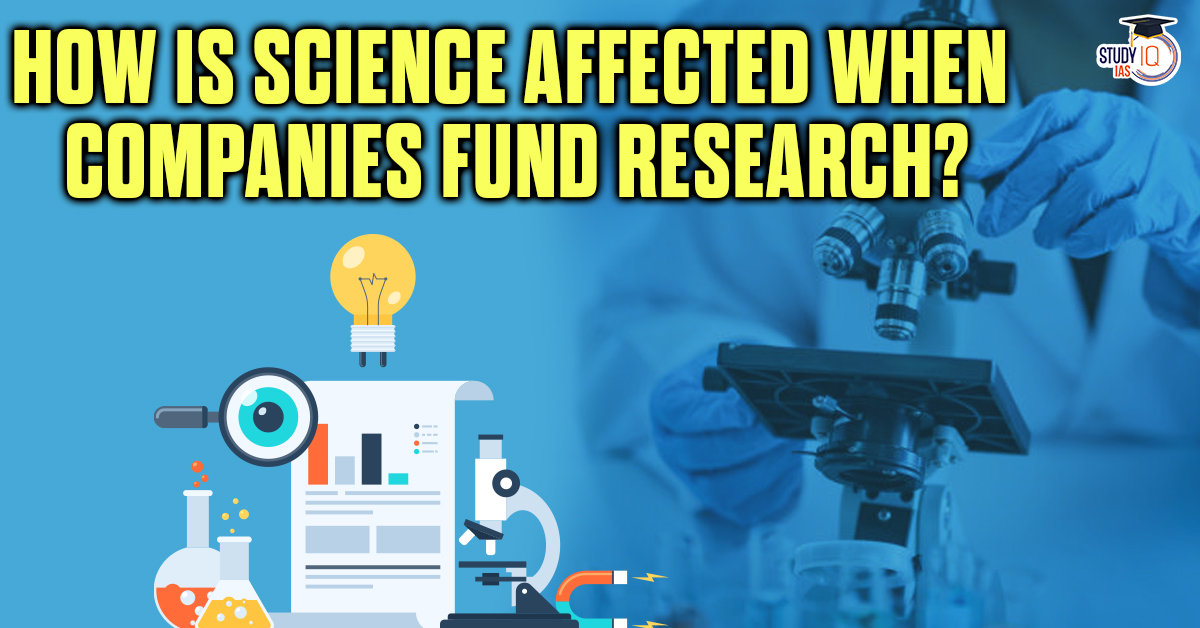Table of Contents
Reasons How Science Is Affected When Corporate Interests Shape Research
Conflict Between Transparency and Intellectual Property (IP)
- Secrecy vs. Open Science:
- Corporate-funded research often prioritizes intellectual property protection, which necessitates secrecy.
- Science historically thrives on openness, reproducibility, and falsifiability. When these principles are compromised, scientific progress is hindered.
- Case Study: AlphaFold 3
- Google DeepMind’s AlphaFold 3 predicted protein structures with enhanced capabilities, such as simulating protein-drug interactions.
- The underlying algorithm was not fully disclosed, unlike its predecessors (AlphaFold and AlphaFold 2).
- The lack of full transparency sparked criticism, with scientists arguing that secrecy prevented reproducibility and verification of findings.
- DeepMind justified this approach, citing commercial interests of its spin-off, Isomorphic Labs, in drug discovery.
Trade-offs in Academic-Industrial Collaborations
- Shift in Research Goals:
- Corporate-funded researchers often align their goals with industry needs, potentially sidelining broader scientific inquiry.
- For example, companies may restrict researchers to specific avenues that align with commercial priorities rather than scientific curiosity.
- Example: Anaesthesia Robot (McSleepy)
- Developed by Thomas Hemmerling’s team, its algorithms were published openly.
- Some parts were integrated into other technologies, referencing the original work.
- Hemmerling emphasized that closer a research output is to a product, the more likely researchers are to withhold details for commercialization.
Financial Pressures on Researchers and Institutions
- Economic Dependency: Universities and research institutions rely on commercial funding to compensate for limited public funding.
- Researchers are encouraged to patent their findings, turning scientific outputs into revenue streams.
- Challenges for Scientists: Researchers face the dilemma of balancing open science with financial viability.
- They may choose to publish foundational algorithms openly but reserve enterprise-ready versions for commercial purposes, as suggested by Benjamin Haibe-Kains.
Intellectual Property and Restricted Access
- Delayed or Partial Disclosure: Corporations may delay the release of data or algorithms, hindering independent verification and scientific advancement.
- Example: AlphaFold 3’s authors promised to release the full code six months after publication, compromising immediate reproducibility.
- Exclusive Rights: Companies often retain exclusive rights to commercialize discoveries, limiting broader societal benefits.
- For instance, Nigeria rejected Tesla’s proposal to buy lithium, preferring a Chinese company to build a processing plant, showcasing how corporate interests can dictate research use.
Misalignment of Incentives
- Blurred Boundaries: Corporations use academic journals to advertise their findings but retain proprietary control over key data and methods.
- This creates an imbalance where industry uses academic platforms for credibility without adhering to academic principles.
- Focus on Profit: For corporate researchers, generating revenue often outweighs advancing science.
- This leads to prioritization of short-term gains over long-term scientific contributions.
Collaborative Agreements and Their Trade-offs
- Joint Ventures with Companies: Researchers sometimes negotiate agreements where companies fund specific projects while allowing labs to retain freedom in other areas.
- This provides financial security but tightens control over specific research directions.
- Trade-offs: Partnerships may limit researchers’ ability to explore conflicting areas of interest due to company-imposed restrictions.
Reduced Public Accessibility of Findings
- Accessibility Barriers: While foundational research may be disclosed, advanced, deployable versions of algorithms or products are kept proprietary.
- This limits the scientific community’s ability to build on such work.
Dependence on Public Funding for Independence
- Role of Government Funding: Public funding ensures researchers can operate without corporate-imposed restrictions.
- Example: COVID-19 vaccines by Moderna and Pfizer were subsidized by governments, ensuring affordability despite IP protection.
- Sustainability through Public Support: Hemmerling emphasized that public funding allows researchers to focus purely on innovation without conflicts of interest.
Way Forward to Balance Transparency and Commercialization
- Hybrid Models: Researchers can publish foundational discoveries while reserving advanced versions for commercialization.
- Example: Haibe-Kains’ lab publishes algorithms openly but develops a premium version for commercial use.
- Increased Public Funding: Governments should allocate more funds to ensure research independence and reduce reliance on corporate funding.
- Ethical Guidelines for Corporate Partnerships: Clear agreements should define the scope of corporate control while preserving academic freedom.
- Incentives for Open Science: Encourage recognition and funding for researchers who prioritize transparency and reproducibility.


 Advanced Air Defence Radars: Types, Comp...
Advanced Air Defence Radars: Types, Comp...
 Ion Chromatography, Working and Applicat...
Ion Chromatography, Working and Applicat...
 Broadly Neutralising Antibodies (bNAbs):...
Broadly Neutralising Antibodies (bNAbs):...

























